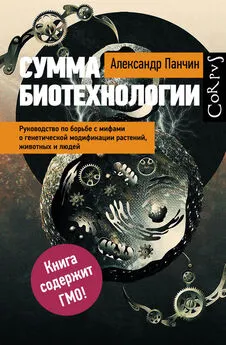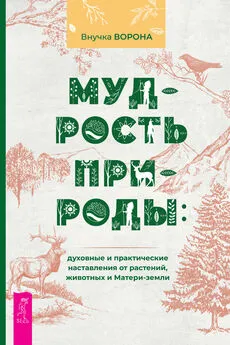Берндт Хайнрих - Лето: Секреты выживания растений и животных в сезон изобилия
- Название:Лето: Секреты выживания растений и животных в сезон изобилия
- Автор:
- Жанр:
- Издательство:Литагент Аттикус
- Год:2021
- Город:Москва
- ISBN:978-5-389-20230-6
- Рейтинг:
- Избранное:Добавить в избранное
-
Отзывы:
-
Ваша оценка:
Берндт Хайнрих - Лето: Секреты выживания растений и животных в сезон изобилия краткое содержание
В формате PDF A4 сохранен издательский макет.
Лето: Секреты выживания растений и животных в сезон изобилия - читать онлайн бесплатно ознакомительный отрывок
Интервал:
Закладка:
Библиография
Bünning E . (1973) The Physiological Clock / 3rd ed. Springer Verlag. Berlin, Heidelberg.
Denny F. E., Stanton E. N. (1928) Localization of Response of Woody Tissue to Chemical Treatment That Breaks the Rest Period // American Journal of Botany. № 15. P. 337–344.
Gwinner E., Wiltschko W . (1980) Circannual Changes in Migratory Orientation in the Garden Warbler, Sylvia borin // Behavioral Ecology and Sociobiology. № 7. Р. 73–78.
Gwinner E . (1986) Circannual Rhythms // Zoophysiology.: Vol. 18. Springer Verlag, Berlin, Heidelberg, New York.
Pengelley E. T., Aloia R. C., Barnes B. (1979) Circannual Rhythmicity in the Hibernating Ground Squirrel, Citellus lateralis , under Constant and Hyperthermic Ambient Temperature // Comparative Biochemistry and Physiology. № 61A. Р. 599–603.
Schmidt-Koenig K . (1975) Migration and Homing in Animals. Springer Verlag. Berlin, Heidelberg, New York.
Pearson T. G. (1917) Birds of America // Garden City Books. Garden City, N. Y.
Banta D. M . (1914) Sex Recognition and Mating Behavior of the Wood Frog, Rana sylvatica // Biological Bulletin. № 26. Р. 171–183.
Berven K. A. (1981) Mate Choice in the Wood Frog, Rana sylvatica // Evolution. № 35. Р. 707–722.
_ , Grudzen T. A . (1991) Dispersal in the Wood Frog ( Rana sylvatica ): Implications for Genetic Population Structure // Evolution. № 44. Р. 2047–2056.
Cornel T. J., Berven K. A., Gamboa G. J. (1989) Kin Recognition by Tadpoles and Froglets of the Wood Frog Rana sylvatica // Oecologia. № 78. P. 312–316.
Emlen S. T. (1968) Territoriality in the Bullfrog, Rana catesbeiana // Copeia. 1968. № 1968. Р. 240–243.
_ , Oring L. W. (1977) Ecology, Sexual Selection, and the Evolution of Mating Systems // Science. № 197. Р. 215–223.
Howard R. D. (1978) The Evolution of Mating Strategies in Bullfrogs, Rana catesbeiana // Evolution. № 32. Р. 859–871.
_ , Kluge A. G. (1985) Proximate Mechanisms of Sexual Selection in Wood Frogs // Evolution. № 39. Р. 260–277.
Lek Organization and Mating Strategies of the Bullfrog (1976) // Behavioral Ecology and Sociobiology. 1976. № 1. Р. 283–313.
Mating Behaviour and Mating Success in Woodfrogs, Rana sylvatica // Animal Behaviour. 1980. № 28. Р. 616–705.
Taigen T. L., Wells K. D. (1985) Energetics of Vocalization by an Anuran Amphibian ( Hyla versicolor ) // Journal of Comparative Physiology. № 155. Р. 163–170.
Waldman B. (1982) Adaptive Signifcance of Communal Oviposition in the Wood Frog ( Rana sylvatica ) // Behavioral Ecology and Sociobiology. № 10. Р. 169–174.
Wells K. D. (1977) The Social Behaviour of Anuran Amphibians // Animal Behaviour. № 25. Р. 666–693.
Territoriality and Mating Success in the Green Frog ( Rana clamitans ) // Ecology. 1977. № 58. Р. 750–762.
Heinrich B. (1984) Strategies of Thermoregulation and Foraging in Two Wasps, Dolichovespula maculata and Vespula vulgaris // Journal of Comparative Physiology. B154. Р. 175–180.
Levi P. (1984) The Period Table. New York: Schocken.
Blackledge T. A., Pickett K. M. (2000) Predatory Interactions between Mud-Dauber Wasps (Hymenoptera, Sphecidae) and Argiope (Aranaeae, Araneidae) in Captivity // Journal of Arachnology. № 28. Р. 211–216.
Brockmann H. J. (1980) Diversity in the Nesting Behavior of Mud-Daubers ( Trypoxylon politum Say: Sphecidae) // Florida Entomologist. № 63. Р. 53–64.
Heinrich B., Casey T. M. (1978) Heat Transfer in Dragonflies: ‘Flyers’ and ‘Perchers’ // Journal of Experimental Biology. № 74. Р. 17–36.
Muma M. H., Jeffers W. F. (1945) Studies of the Prey of Several Mud-Dauber Wasps // Annals of the Entomological Society of America. № 38. Р. 245–257.
O’Neil K. M., O’Neil J. F., O’Neil R. P. (2007) Sublethal Effect of Brood Parasitism on the Grass-Carrying Wasp, Isodontia mexicana // Ecological Entomology. № 32(1). Р. 123–127.
Shafer G. D. (1949) The Ways of a Mud Dauber. Palo Alto, Calif: Stanford University Press, 1949.
Als T. D., Vila R., Kandul N. P. et al. (2004) The Evolution of Alternative Parasitic Life Histories in Large Blue Butterflies // Nature. № 432. Р. 386–390.
Bingham C. T. (1907) Fauna of British India // Butterflies. Vol. 2.
Braby M. F. (2000) Butterflies of Australia. Melbourne // CSIRO. Vol. 2. P. 622–623.
Eastwood R., King A. J. (1998) Observations on the Biology of Arhopala wildei Miskin (Lepidoptera: Lycaenidae) and Its Host Ant Polyrhachis queenslandica Emery (Hymenoptera: Formicidae) // Australian Entomologist. № 25(1). Р. 1–6.
Lohman D. J., Liao Q., Pierce N. E. (2006) Convergence of Chemical Mimicry in a Guild of Aphid Predators // Ecological Entomology. № 31. Р. 41–51.
Artful Diners // Natural History. 1980. № 86. Р. 42–51.
Dussourd D. E., Denno R. F. (1991) Deactivation of Plant Defenses: Correspondence between Insect Behavior and Secretory Canal Architecture // Ecology. № 72. Р. 1383–1396.
Greene E. (1989) A Diet-Induced Developmental Polymorphism in a Caterpillar // Science. № 243. Р. 643–646.
Heinrich B. (1971) The Effect of Leaf Geometry on the Feeding Behaviour of the Caterpillar of Manduca sexta (Sphingidae) // Animal Behaviour. № 19. Р. 119–124.
_ , Collins S. L . (1983) Caterpillar Leaf Damage and the Game of Hide-and-Seek with Birds // Ecology. № 64. Р. 592–602.
Foraging Strategies of Caterpillars: Leaf Damage and Possible Predator Avoidance Strategies // Oecologia. 1979. № 40. Р. 325–337.
Holmes R. T., Schultz J. C., Nothnagle P. (1979) Bird Predation on Forest Insects: An Exclosure Experiment // Science. № 206. Р. 462–463.
Real P. G., Ianazzi R., Kamil A. C., Heinrich B. (1984) Discrimination and Generalization of Leaf Damage by Blue Jays ( Cyanocitta cristata ) // Animal Learning and Behavior. № 12. P. 202–208.
Salazar B. A., Whitman D. W. (2001) Defensive Tactics of Caterpillars against Predators and Parasitoids // Insects and Plant Defence Dynamics. Ed. T. N. Ananthakrishnan. Enfeld, N. H.: Science Publishers. Р. 101–207.
Stamp N. E., Casey T. M. (eds.) (1993) Caterpillars: Ecological and Evolutionary Constraints on Foraging. New York: Chapman and Hall.
Wagner David L. (2005) Caterpillars of Eastern North America. Princeton, N. J.: Princeton University Press, 2005.
Aiello A., Silberglied E. (1878) Life History of Dynastor darius (Lepidoptera: Nymphalidae: Brassolinae) in Panama // Psyche. № 85. Р. 331–345.
Booth F. W., Neufer P. D. (2005) Exercise Controls Gene Expression // American Scientist. № 93. Р. 28–35.
Collins M. M. (1999) A Hostplant-Induced Larval Polymorphism in Hyalophora euryalus (Saturniidae) // Journal of the Lepidopterists’ Society. № 53. Р. 22–28.
Fink L. S. (1995) Foodplant Effects on Colour Morphs of Eumorpha fasciata Caterpillars (Lepidoptera: Sphingidae) // Biological Journal of the Linnaean Society. № 56. Р. 423–437.
Gibb J. A. (1962) L. Tinbergen’s Hypothesis of the Role of Specifc Search Images // Ibis. № 104. Р. 106–111.
Grayson J., Edmunds M. (1089) The Causes of Color and ColorChange in Caterpillars of the Poplar Hawkmoths ( Laothoe populi and Smerinthus ocellata ) // Biological Journal of the Linnaean Society. № 37. Р. 263–279.
Greene E. (1989) A Diet-Induced Developmental Polymorphism in a Caterpillar // Science. № 243. Р. 643–646.
Hudson A. (1966) Protein in the Haemolymph and Other Tissues of the Developing Tomato Hornworm, Protoparce quinquemaculata Haworth // Canadian Journal of Zoology. № 44. Р. 541–555.
Miller J. C., Janzen D. H., Hallwachs W. (2006) Caterpillars: Portraits from the Tropical Forests of Costa Rica / Cambridge, Mass., and London: Harvard University Press.
Schneider G. (1973) Ueber den Einfluss verschiedener Umweltfaktoren auf den Faerbungspolyphaenismus der Raupen des tropisch-amerikanischen Schwaermers Erinnyis ello L. (Lepidopt. Sphingid.) // Oecologia (Berlin). № 11. Р. 351–370.
Suzuki Y., Frederik Nijhout H. (2006) Evolution of a Polymorphism by Genetic Accommodation // Science. № 311. Р. 650–651.
Truman J. W., Riddiford L. M., Safranek L. (1973) Hormonal Control of Cuticle Coloration in Manduca sexta : Basis of an Ultrasensitive Bioassay for Juvenile Hormone // Journal of Insect Physiology. № 19. Р. 195–203.
Wagner D. L. (2005) Caterpillars of Eastern North America. Princeton, N. J.: Princeton University Press.
Beckage N. E. (1997) The Parasitic Wasp’s Secret Weapon // Scientific American. Р. 82–87.
Cruz Y. P. (1981) A Sterile Defender Morph in a Polyembryonic Hymenopteran Parasite // Nature. № 294. Р. 446–447.
Marsh F. L. (1937) Ecological Observations upon Enemies of Cecropia, with Particular Reference to Its Hymenopterous Parasites // Ecology. № 18. Р. 106–112.
A Few Life-History Details of Samia cecropia within the Southwestern Limits of Chicago // Ecology. 1941. № 22. Р. 331–337.
Benson J., Pasquele A., Van Driesche R. G., Elkinton J. (2003) Introduced Braconid Parasitoids and Range Reduction of a Native Butterfly in New England // Biological Control. № 28. Р. 197–213.
Boettner G. H., Elkinton J. S., Boettner C. J. (2000) Effects of a Biological Control Introduction on Three Nontarget Native Species of Saturniid Moths // Conservation Biology. № 14. Р. 1798–1806.
Elkinton J. S., Parry D., Boettner G. H. (2006) Implicating an Introduced Generalist Parasitoid in the Invasive Browntail Moth’s Enigmatic Demise // Ecology. № 87. Р. 2664–2672.
Godfray H. C. J. (1995) Field Experiments with Genetically Manipulated Insect Viruses: Ecological Issues // Trends in Ecology and Evolution. № 10. Р. 465–469.
Marshall S. A. (2006) Insects: Their Natural History and Diversity. Buffalo, N. Y.: Firefly.
Peigler R. S. (1994) Catalogue of Parasitoids of Saturniidae of the World // Journal of Research on the Lepidoptera. № 33. Р. 1–121.
Smith M. A., Wood D. M., Janzen D. H. et al . (2007) DNA Barcodes Affrm That 16 Species of Apparently Generalist Parasitoid Flies (Diptera, Tachinidae) Are Not All Generalists // Proceedings of the National Academy of Sciences. № 104. Р. 4967–4972.
Читать дальшеИнтервал:
Закладка:

![Берндт Хайнрих - Зачем мы бежим, или Как догнать свою антилопу [Новый взгляд на эволюцию человека] [litres]](/books/1057566/berndt-hajnrih-zachem-my-bezhim-ili-kak-dognat-svo.webp)








